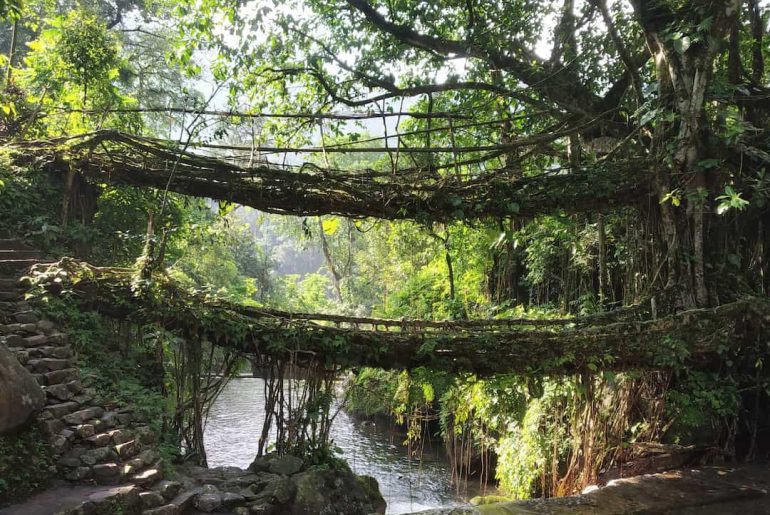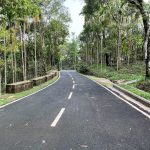Living root bridges are a unique form of architecture found in Northeastern India. They are created by training the roots of the Ficus elastica tree to grow in a particular direction, forming a bridge over rivers and streams. The Khasi and Jaintia tribes of Meghalaya have been building these bridges for over 500 years, using the technique out of necessity to cross waterways during the rainy season. It is believed that a Khasi tribe member named U Nongkynrih invented the method.
The unique double decker living root bridge

Double-decker living root bridges are unique structures with two levels for crossing rivers and irrigation. They can be found in the Khasi and Jaintia hills of Meghalaya, India, with the most famous one being the over 200-year-old Ummunoi Double Decker Living Root Bridge in Nongriat village.
The process of creating a living root bridge
Creating a living root bridge involves selecting a suitable location, planting Ficus elastica tree saplings on either side of a river, guiding the roots along bamboo and stones to form a bridge, cutting unwanted growth, and allowing the bridge to mature for several years. The community is essential in this process, coming together to select the location, plant saplings, guide roots, and maintain the bridge. They regularly monitor the bridge’s condition and make any necessary repairs.
The peculiarities of the double decker living root bridge
The two types of double-decker living root bridges are the Ummunoi and Ritymmen, serving both as a bridge and a system for irrigation. Creating and maintaining these bridges is challenging due to natural disasters and limited resources, but conservation efforts and tourism have helped preserve their cultural and ecological significance.
The significance of living root bridges for the Khasi community
Living root bridges are crucial to the Khasi people’s culture and tradition in Meghalaya, India. They serve as a means of transportation and a source of pride, representing the close relationship between humans and nature. These bridges are unique and are revered as living entities, passed down through generations in the Khasi community as a significant part of their heritage.
Exploring the majestic double decker living root bridge
Double-decker living root bridges are a rare and unique phenomenon found only in certain parts of Meghalaya. The best places to see them are in the remote villages of Nongriat and Mawsynram, which offer breathtaking views of the surrounding natural beauty. Preserving and maintaining these bridges is crucial to ensure their longevity.
Maintaining the living root bridges for future generations
Living root bridges are vital to the Khasi community’s cultural heritage. Several edifices are rundown because they have not been maintained and have been affected by natural catastrophes. However, several organizations and individuals are working to preserve and protect these bridges through regular maintenance, restoration work, and promoting eco-tourism. Individuals can also help protect the bridges by respecting the surrounding natural habitat and supporting local initiatives for sustainable development. It is essential to appreciate and respect these unique structures and work together to preserve them for future generations.






